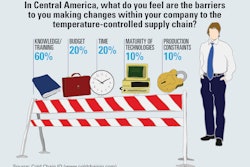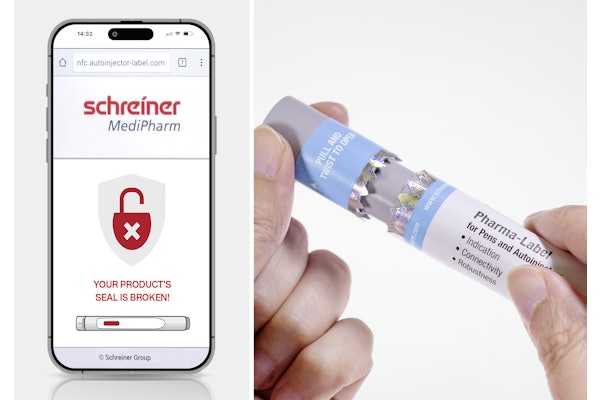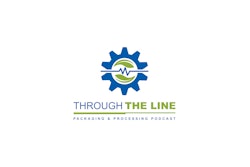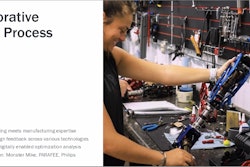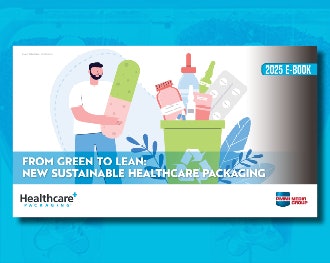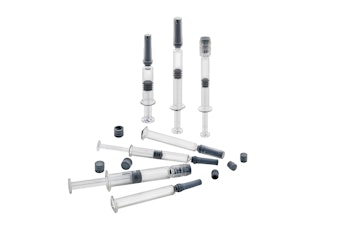When a patient opens her mailbox and pulls out a small-parcel shipment that contains her prescription rheumatoid arthritis medicine for self-injection at home, she’s not likely to spend much time thinking of how the biologic-based treatment arrived safely at her address. Fortunately, there’s an entire supply chain dedicated to moving that temperature-sensitive Rx from the manufacturer to the patient’s mailbox—or to a hospital, physician’s office, etc.
This supply chain was the focus of the 10th Anniversary Cold Chain & Temperature Management Global Forum Sept. 24-28 in Chicago. And while the “cold chain” often refers to the 2° to 8° C temperature range required for many refrigerated pharmaceuticals, biologics, and combination products, manufacturers of these products must also consider broader ambient and frozen temperatures when evaluating packaging and logistics choices.
In “The Geography of Transport Systems,” authors Dr. Jean-Paul Rodrigue and Dr. Theo Notteboom note, “The cold chain refers to the transportation of temperature-sensitive products along a supply chain through thermal and refrigerated packaging methods and the logistical planning to protect the integrity of these shipments.”
Earlier this year, Healthcare Packaging magazine announced a partnership agreement with IQPC, an international events producer, whose Cold Chain IQ division is involved in cold chain education, conferences, and events. The agreement involved live editorial coverage from the Chicago event. This article reports on some of the forum’s events.
Supply chain track and trace—how close are we?
A lack of federal or global guidelines on track and trace and e-pedigree leaves more questions than answers. Where does all the data go? The tone of the session was that we can create the data, we’re just not sure what we are going to do with it.
With no central gateway, where will all this information be stored? Who will be able to access it? To what degree will others in the supply chain be able to access my production schedules?
John Roberts of GS-1 suggested that the GS-1 system of standards should be used to improve visibility and efficiency in the supply chain. GS-1 is based on the philosophy of identify, capture, and share. Any production information on the package should be included in the widely recommended 2D Matrix bar code, including lot, expiration date, serial number, production date, quantity, etc.
While the U.S. Food and Drug Administration has not officially commented on standards for pharmaceutical track and trace, recent movement with the UDI (Unique Device Identifier) for medical devices could be a blueprint for the future. Input from industry on the FDA UDI proposal was welcomed and the agency says it designed the program to build on “current standards and systems already in use by some companies” to “minimize industry costs and expedite implementation.”
This bodes well for GS-1, now in use in 110 countries. But don’t confuse a proposed U.S. ruling in the medical device market for global harmony in pharmaceutical serialization. One participant presented the scenario of 200 drugs manufactured in 40 countries for sale in 100 countries. That is a lot of data to generate, store, and pass. And a lot of “customization” is necessary to satisfy certain countries—even the state of Florida has separate rules and regulations.
A major distributor talked about not being able to send product from New York to Florida in case of a shortage, because the New York-based product had not been prepared properly.
And while GS-1 wholeheartedly supports 2D Matrix, other countries are still calling for stacked linear codes, with “legacy” readers flooding the landscape.
One speaker mentioned that the whole reason for serialization, patient safety, will be lost if pharmacies and hospitals don’t invest in new scanners and software.
Even the DEA, only concerned with controlled substances, is overwhelmed by the wide variety of technology it encounters with different manufacturers securing dangerous drugs.
Panelists felt this time California, “the fourth-largest economy in the world,” would stick with 2015 deadlines. But one participant tossed off the threat of California cracking down in 2015, commenting, “they don’t have the funds to do anything.”
Most participants said only a federal mandate would get them in gear. And that does not address the inconsistent data requirements around the globe.
So, how close are we to track and trace? The answer seems to be we are miles away. And according to this conference, only a federal mandate, with standards, can pave the way. Until then, the industry seems comfortable with the “wait and see” attitude so prevalent today.
Logistical challenges
Cold chain experts agree you have to have people “in country” to help negotiate rules, regulations, and local customs.
Many markets are emerging for clinical trials because the FDA requires “naïve patients,” or places like the Ukraine to fill quotas, or even because the drug being tested might be sold into that country eventually.
The number-one emerging market is China, followed by Brazil, Russia, and India. But don’t discount other countries like Korea, Vietnam, Turkey, Venezuela, Pakistan, and Romania.
A successful international cold chain shipping program depends on local people you can rely upon. Typically, a first-time big problem or even numerous smaller excursions usually can be traced back to human error—and the loss of one knowledgeable “local” can be devastating. Training, and retraining is key. So whether you outsource to a contract research organization (CRO), or hire your own in-country person, you need “feet on the street” at the point of delivery for your international cold chain shipments to succeed.
Particularly frustrating is the fact that many countries want to extract additional revenue from you thinking you have deep pockets.
Tests that you have already done and paid for in the U.S. may be ordered in that country, but are they really required?
A local contact knowledgeable about the rules and regulations—and local culture and customs—is a must.
Brazil and Argentina were cited as good sites for clinical trials, but they are two countries that have set high hurdles for investigational drugs. They don’t make it any easier to bring in drugs in a timely manner. Worse, cooperation between countries in Latin America may be nonexistent.
You may have an overage of shippers in country A, and a shortage right next door in country B. But you may have to ship through the U.S. or the U.K. just to move a product a few hundred miles. This is opposed to the EU where once you have drugs on the ground, going from country to country is relatively painless.
Risk management
Truly understanding your product and distribution process will help prevent under- or overengineering your cold chain packaging.
In a heated presidential election season, government spending is often discussed, but when it comes to the development, contracting, and supply of vaccines, antivirals, diagnostics, therapeutics, and ancillary products, particularly for influenza, watching costs is a priority for Conceptual MindWorks.
Geoffrey Glauser is the project manager for Conceptual MindWorks, a consulting contractor and subject matter expert in support of the Manufacturing, Facilities, and Engineering Division of the Biomedical Advancement Research Development Authority (BARDA) in the office of the Assistant Secretary for Preparedness and Response (ASPR) within the U.S. Dept. of Health and Human Services (HHS).
In assessing risk management in the packaging and shipping of temperature-sensitive medications, Glauser recommended fiscal responsibility and not overengineering any solution or spending more than you needed to get product from one point to another.
During a Sept. 27 presentation, “Detailed Insight to Supply Chain and Cold Chain Risk Management,” Glauser offered multiple insights on the topic, including the following:
• Use Parenteral Drug Assn. Technical Report 58 as a reference to save time in plotting shipping lanes. The report, which can be downloaded, aims to help manufacturers and distributors apply risk management to distribution practices.
• You can always under- or overengineer packaging. It’s important to understand what your product can withstand, develop stability data, determine secondary and tertiary packaging, and use patient impact as the key to anything you transport.
• Factor in economics, such as the value not only of the product itself, but also its market value, as well as insurance coverage. Take into account if your shipment represents a one-time lane as opposed to a lane you will use often. Is it worth adding $50 for a shipping container if that investment results in no deviations or inspections?
• Assign risk priorities to each “touch point” in your process do determine priorities.
• The lack of training and awareness at different points in the supply chain is a big problem. Better to explain to a carrier or handler key issues upfront to avoid potential problems.
In global distribution, don’t forget the patient
Aiming for global harmonization in the complex temperature-sensitive distribution supply chain is ambitious, making it vital to keep the focus on the patient.
Patient safety is generally assumed to be the bottom-line goal of the complex pharmaceutical/biologics supply chain. Yet sometimes a gentle reminder helps bring patient safety center-stage.
During a question-and-answer period following the event’s Sept. 27 “Panel Discussion: Global Supply Chain Harmonization: Strategies to Improve Collaboration with your Freight Forwarder,” one attendee observed that amid all the discussion about improving communication between manufacturer, distributor, freight forwarder, carrier, etc., he did not once hear the word “patient.”
All five panelists were quick to thank the attendee for bringing patient safety back to the forefront of the global supply chain discussion. The well-worn phrase “last-mile distribution” was interpreted a bit differently by the panelists, which included professionals from Johnson & Johnson, Bayer Healthcare, Fedex, Cubist Pharmaceuticals, and Panther Life Science Logistics.
One panelist admitted the discussion had not “delved into that,” saying, “the patient is what it’s all about, and we should include that in our discussions.”
For all the bridge-building at different points along the supply chain, it was noteworthy to hear panelists admit that along that “last mile,” there are occurrences such as a clinical trial facility failing to properly condition the package, or a physician or patient receiving a shipment and not knowing how to either handle the delivery or dispose of the packaging.
One panelist noted that her company incorporated comments from the field and made packaging changes as a result.
The “last mile” might result in a package reaching a distributor, hospital, or patient, noted another panelist.
Finally, a panelist noted that with all the work a manufacturer does to produce a treatment to help a condition, it’s imperative that the global supply chain delivers the right product at the right time and in the right condition to the right patient.



